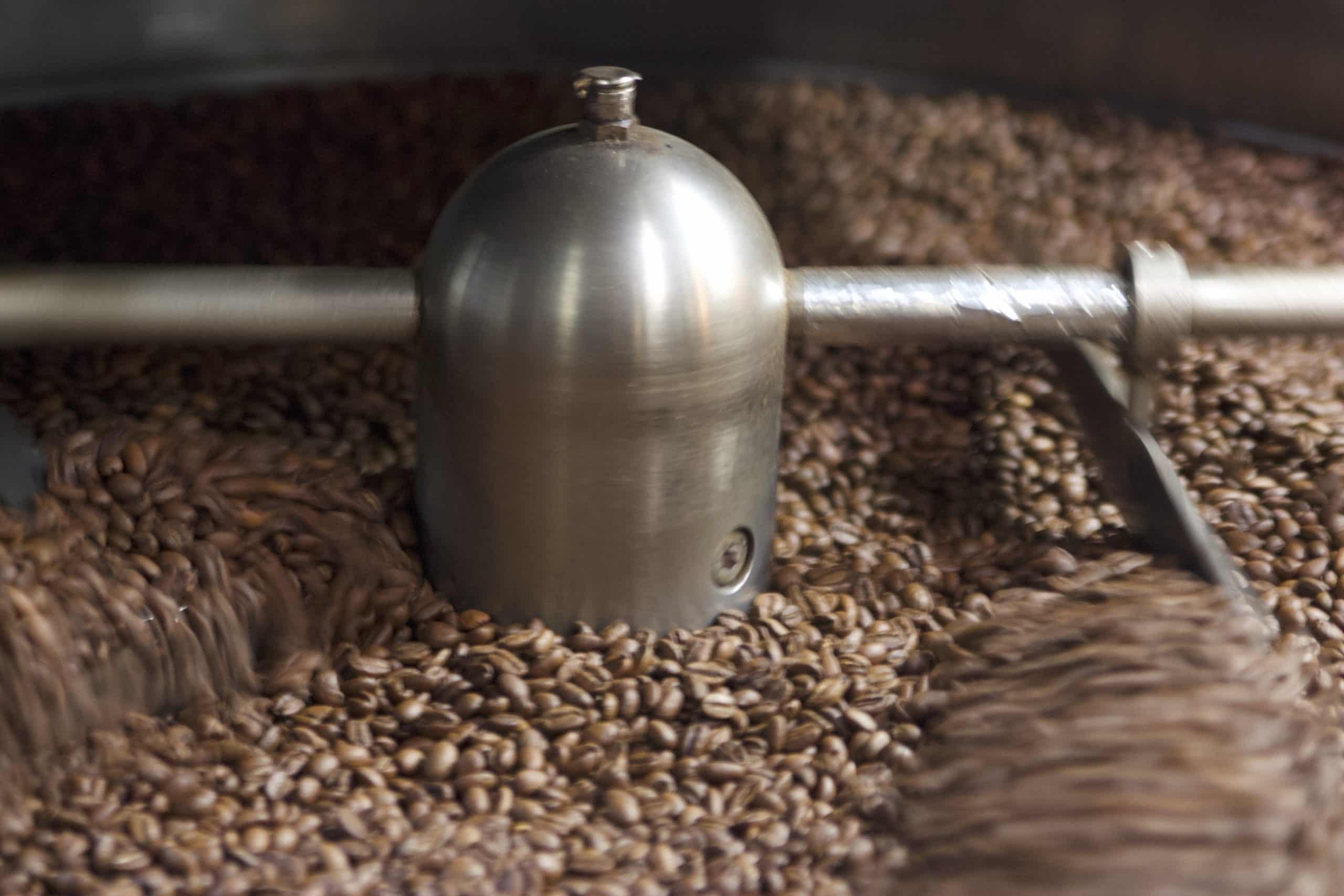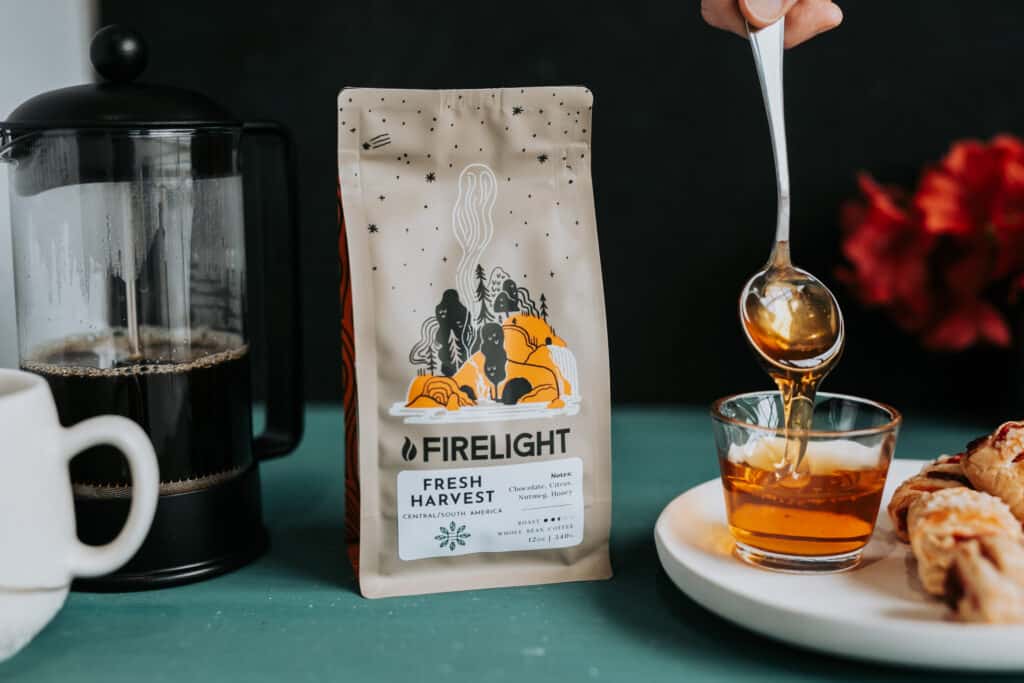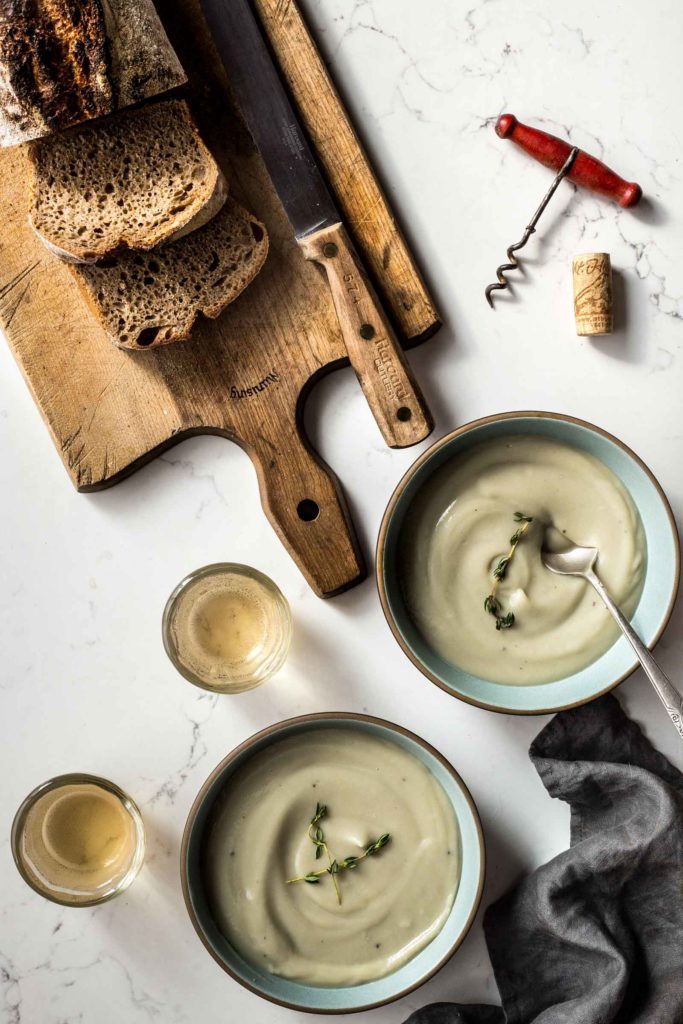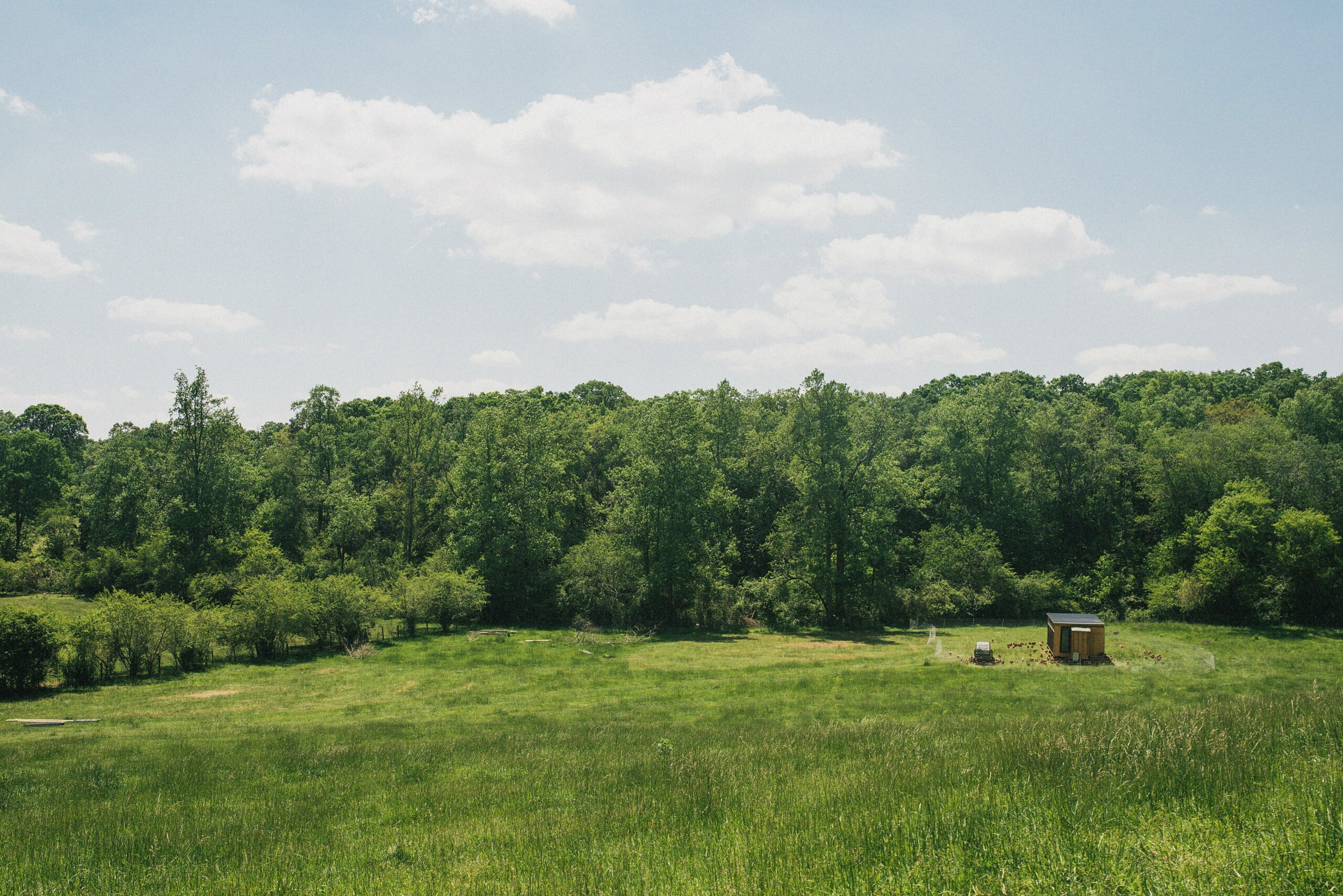On a drizzly Saturday morning in January I woke up early, reluctantly foregoing my usual morning espresso. Instead I hopped in the truck hoping to score a cup of coffee on Atlanta’s west side where I met Firelight Coffee Co-Owner Ryan Harlan in his small roastery. I distractedly chatted with roaster Tim Whitson while Ryan prepared my pour-over of Ethiopian Yirgacheffe in the background. Together we took a nerd-out look at the coffee world, from the sourcing, to brewing methods, to flavors, and some of coffee’s many misconceptions. Grab a mug of your favorite brew and follow along with our conversation!

Where does coffee come from?
Tim: That’s a complex question, my friend! First off, there are many varieties of trees. The two main types are Arabica and Robusta. Robusta is nearly disease-proof, grows at lower altitudes, and at a much faster clip. But it also tastes terrible. So we only use Arabica beans. But within Arabica trees, there are still a lot of different varieties.
Ryan: To approach your question from a geographical angle, coffee comes from all over the world and its flavor is affected accordingly. For instance, because of the soil and climate an Ethiopian coffee is going to be fruitier tasting. The Central American region is going to have a nuttiness to it. Oceanic coffees are typically volcanic in soil and add an earthy flavor to your palate. Brazilian types tend to be more chocolatey and fuller bodied, while other South American types end up being more of a mixed bag. Coffee is totally affected by geology and climate!
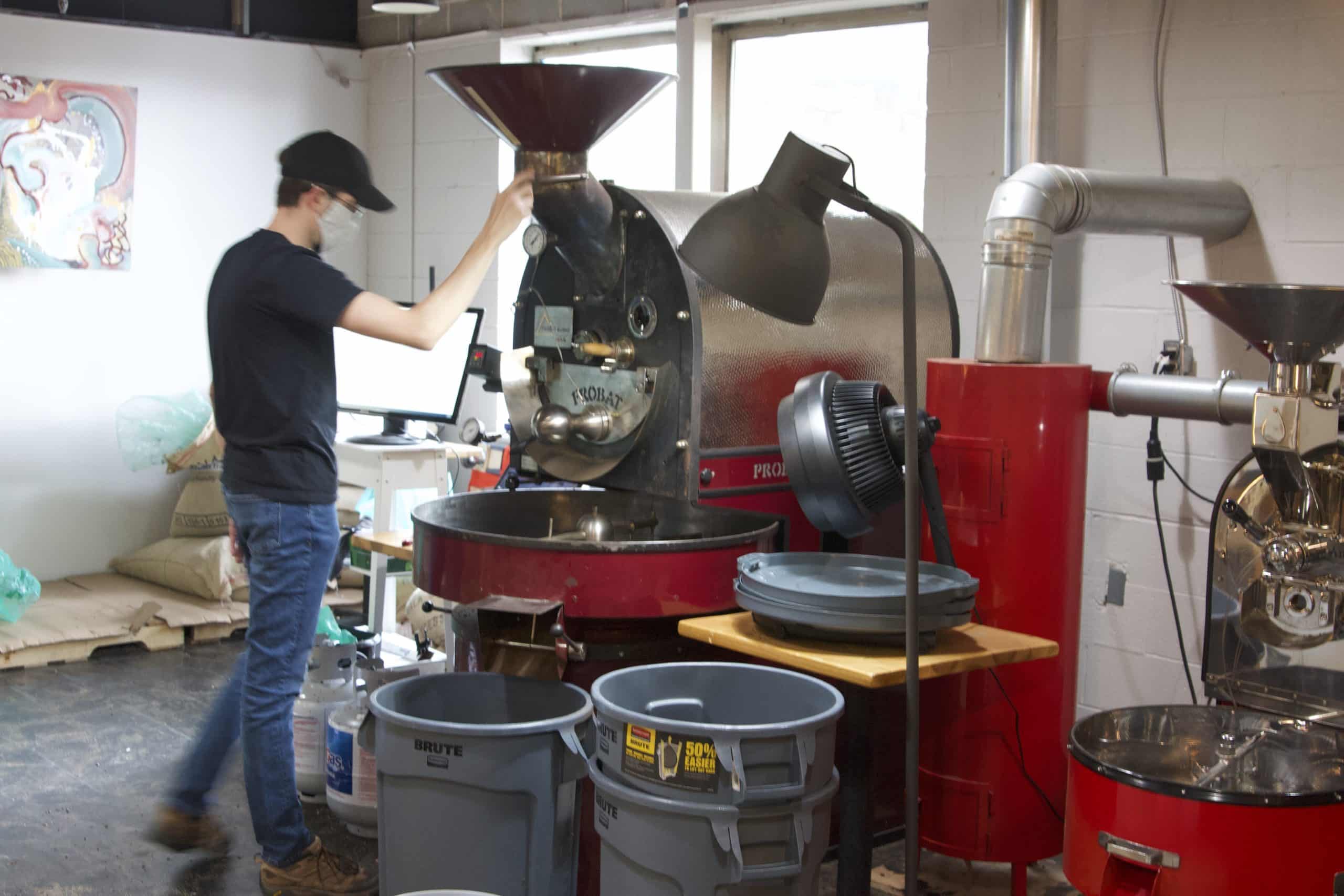
What makes coffee taste acidic?
Tim: The biggest things most people point to are altitude, the type of tree, and environmental factors like sunlight and rainfall. The higher something is grown, the more fruity and complex it’s going to be. The lower a tree is grown, the more full bodied and even it will taste. All coffee is acidic in that it can cause you heartburn, but generally acidity is best described as how well the taste sticks around in your mouth. The Ethiopian coffee you’re drinking has higher acidity while the Fresh Harvest blend is a lower acidity coffee, making it a good choice for all palates.
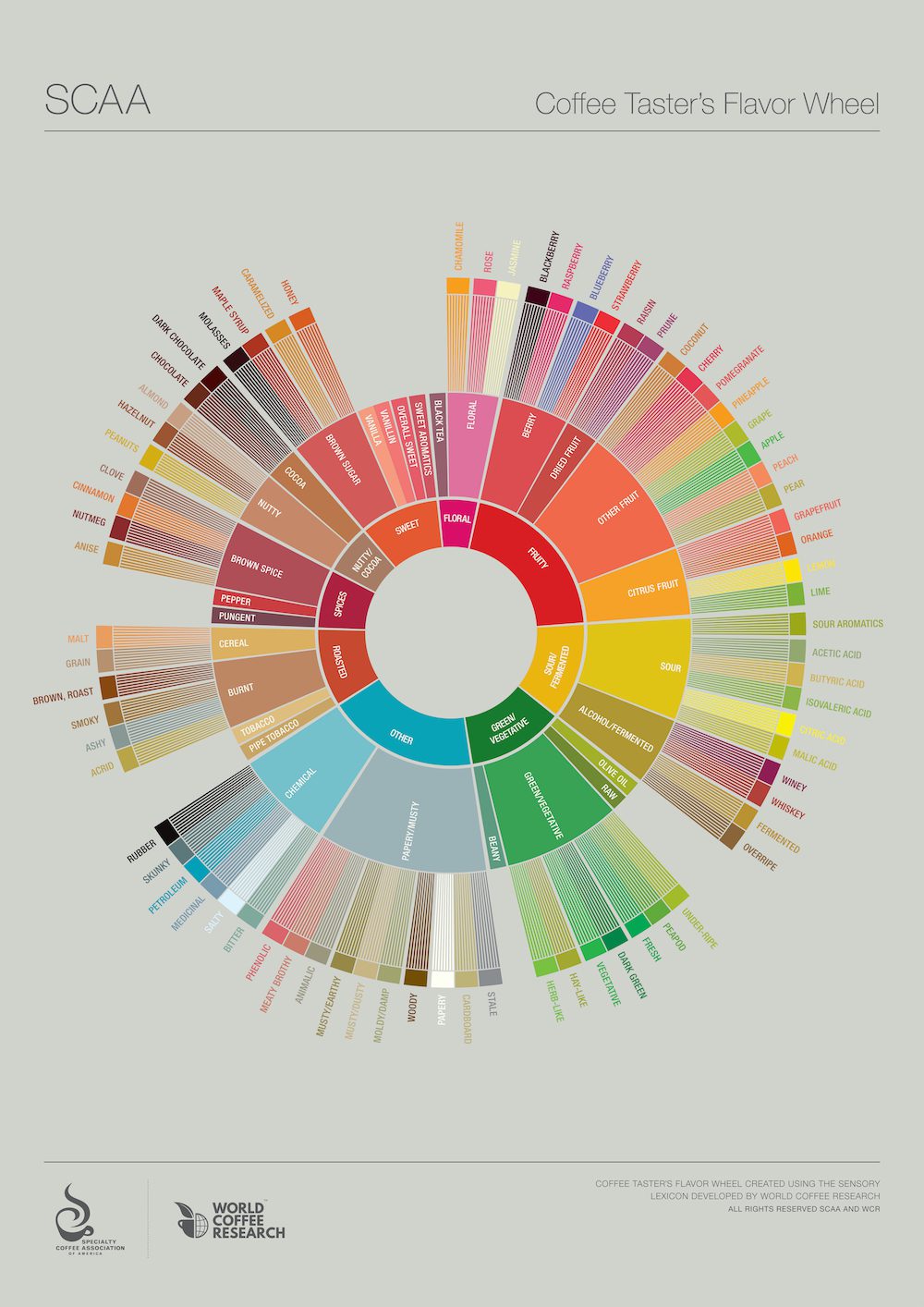
How can I determine which coffee is right for me?
R: In terms of a decision tree, most consumers first need to determine their preferred brew method and then get into flavor profiles. There are three main methods, by and large, for brewing coffee.
- The gravity method: a standard coffee drip or pour over.
- The steep method: a French press is the most common example.
- The pressure method: an espresso maker or an aero press.
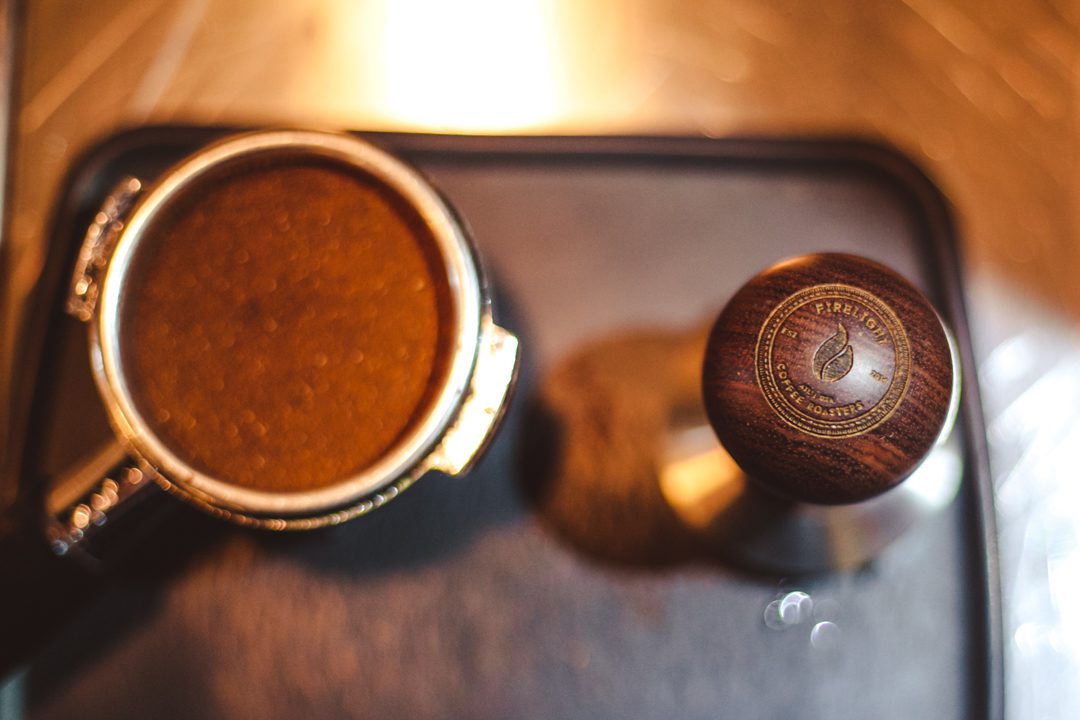
What’s the deal with espresso?
- There’s nothing different about the bean itself.
- Espresso is typically more soluble. Beans used for espresso become more soluble the longer they’re roasted and are typically ground to a finer consistency to add to their solubility.
- Espresso beans are roasted on a slightly darker profile. This shouldn’t mean burnt.
- Espresso does not have more caffeine. But I will say, the concentration of coffee to water is more dense in espresso drinks.
- I’d recommend either the Fresh Harvest blend, the Colombian Huila, or the Canopy blend for someone who is a fan of espresso.
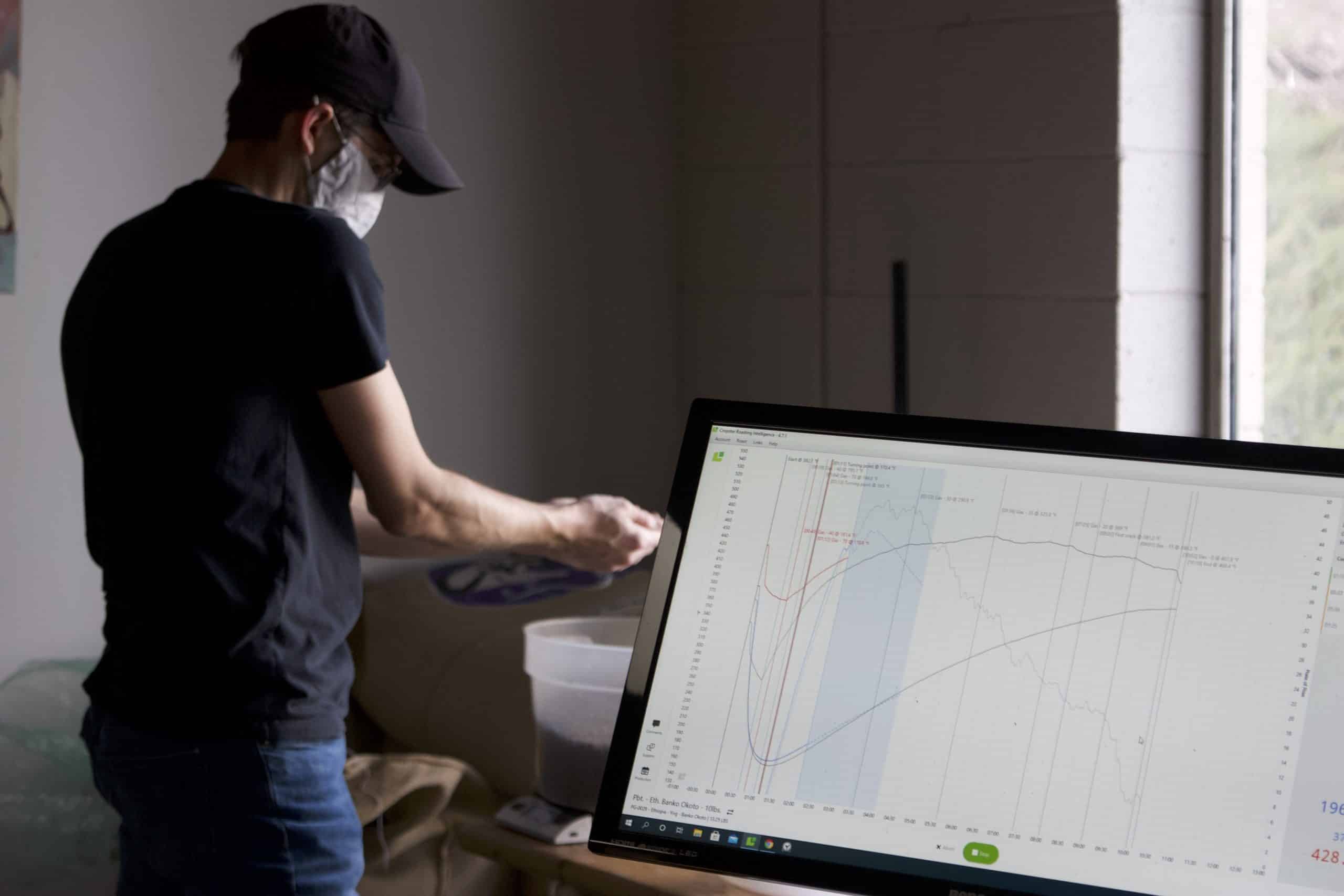
Why is your coffee not as dark and oily as Starbucks’?
R: As it heats up in the roaster, the sugar inside the bean starts to caramelize. This is the crack you’re hearing. We don’t take our coffee to the point called second crack, which is where you start to see the oily texture on the outside. Starbucks takes their beans to second crack. Basically, all of the oils and flavors inside the coffee are burnt and become oils on the outside of the bean. It’s an easy way to make a very consistent coffee, and they’ve convinced the world that that’s what it’s supposed to taste like.

Where do you source your beans?
R: For the past several years, we’ve sourced more Brazilian coffee than any other type and just about all of it comes from Fazenda Ambiental Fortaleza (FAF), meaning Environmental Fortress Farm. They lead the effort on sustainability for their region and for the entire country. Silvia Barretto, a fourth generation coffee farmer took the reins in 2001 and converted her entire farm to organic practices. We’ve contracted with them for several tons of coffee to roast this upcoming year. You can find Silvia’s beans in the Fresh Harvest blend and the Canopy blend.
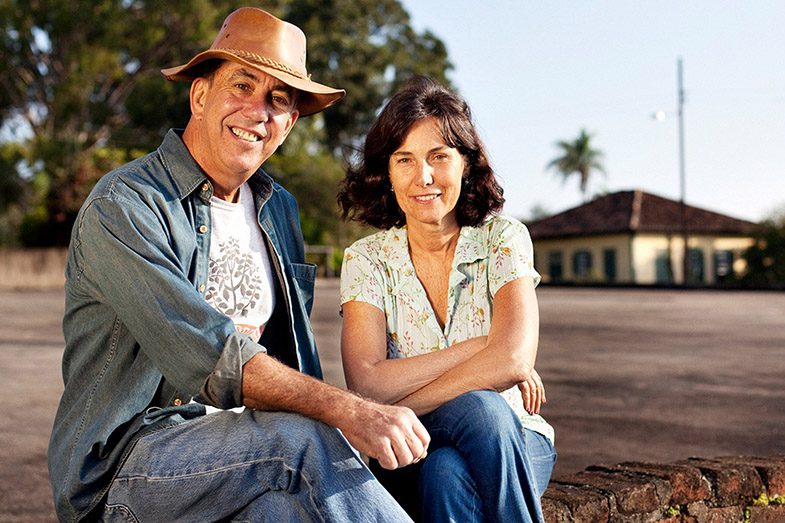
Another example on a smaller scale is our partnership with Farmer Tigist Waqo, an Ethiopian farmer who we met through a distributor called Keffa Coffee. We loved the coffee from her farm so much that we went ahead and preordered more of it from her next 2021 harvest. This is really exciting. Tigist knows that while her team is working she’s already sold part of her harvest.
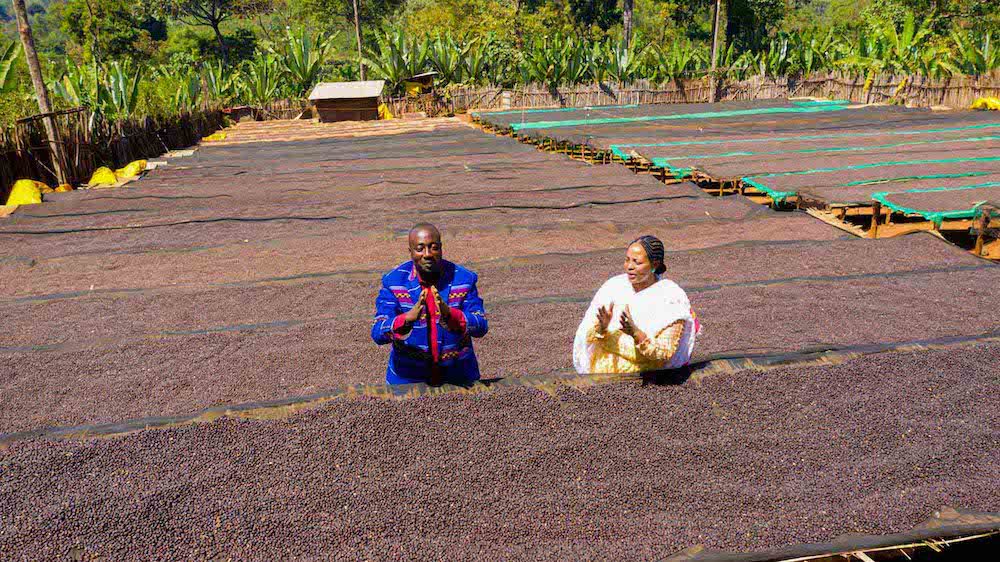
Common Misconceptions about Coffee
- Fair Trade is the exception. In fact fair trade is now a standard for specialty coffee roasters. Absolutely every farmer and distributor we work with is at least fair trade certified. It’s really a means to ensure that producers are being paid above the fair market price. We pay at least double commodity pricing.
- Coffee tastes like coffee. In case you couldn’t tell by now, coffee has a much wider taste range than one particular flavor. There are fruity tastes, nutty tastes, earthy tastes, caramel tastes. Check out the tasting chart above to learn more.
- Drinking vessels don’t affect flavor. Actually they do. Clean equipment produces better tasting coffee and ceramic, porcelain, or glass mugs don’t disrupt the flavor of the coffee like some metals can.
- Decaf contains formaldehyde. We purchase decaf coffee that is processed using the Swiss Water method, which uses pressure instead of chemicals like formaldehyde to pull caffeine from the beans. In fact, we aren’t sure if formaldehyde is still used as a decaffeinating agent in any coffee these days.
- Espresso. Maybe the biggest misconception is that espresso is spelled with an “X”
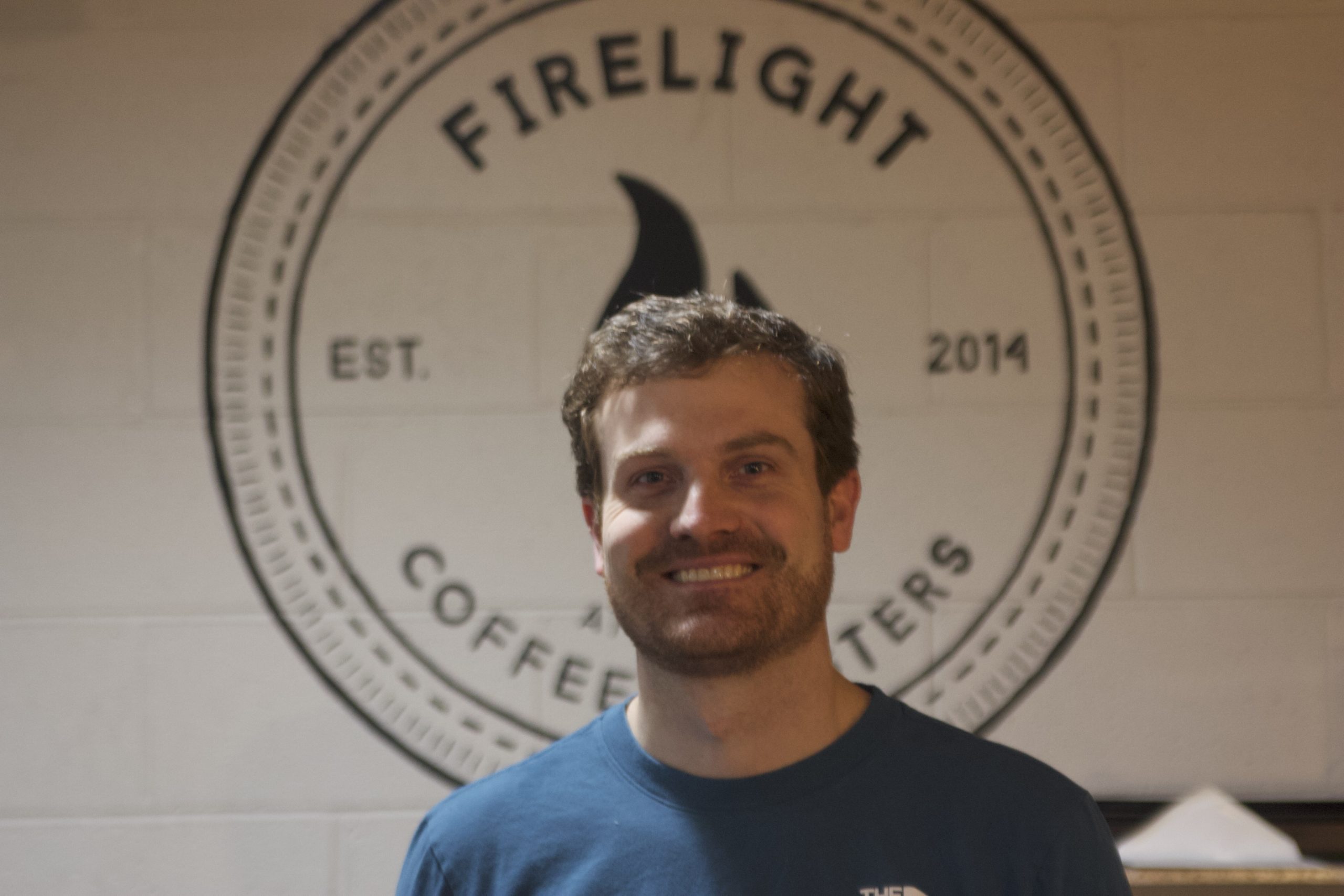
What’s your go-to brew method and favorite coffee?
R: My favorite fun way to prepare the bean is with the aero press. It’s a workout for sure. But whenever I go hiking or camping, that’s what I bring. And the toffeeness of the Columbian Huila is my favorite.
T: A pour-over of Ethiopian coffee is probably my favorite right now.
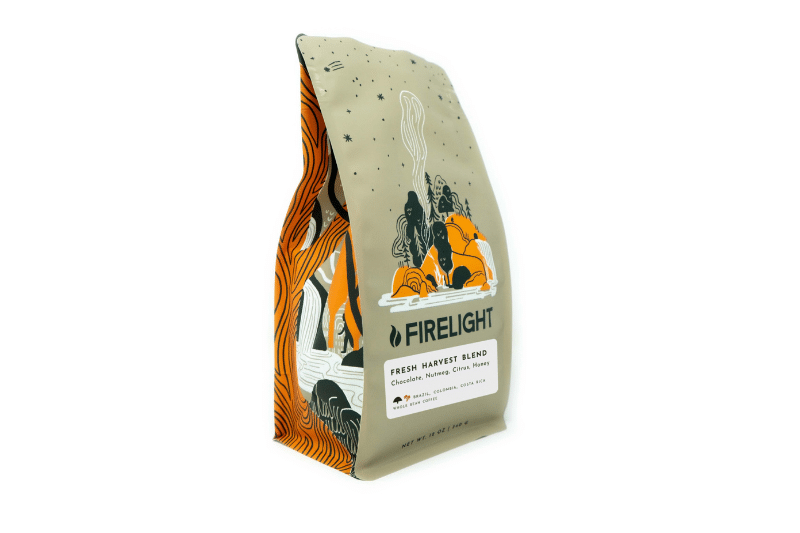
Where to find Firelight Coffee
R: We roast for some local Atlanta coffee shops like Inman Perk, Gilly Brew Bar, Fetch dog park, and Java Cats among others. And of course, our coffee can be purchased as an add-on to Fresh Harvest’s local farm delivery baskets.
We’re super thankful because, to be fully transparent, FH customers enabled us to stay afloat during the pandemic. All the cafes and shops that we provide to either blinked or closed completely for a period of time. Fresh Harvest’s support has also allowed us to maintain a consistency in our sourcing, which makes a significant impact on the farmers.
